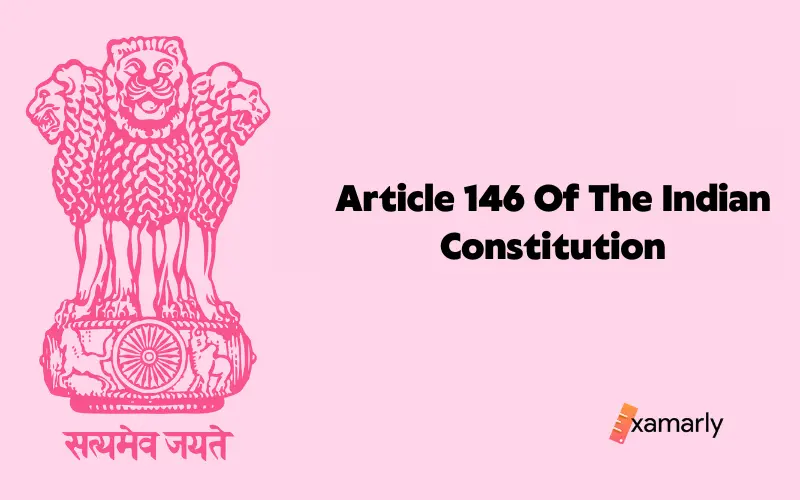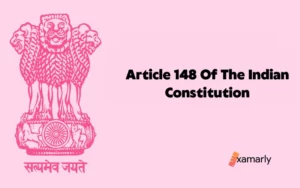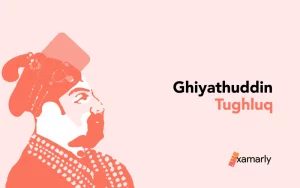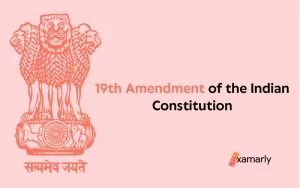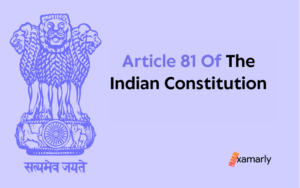Overview
Article 146 of the Indian Constitution talks about the provisions regarding the appointment of personals in the Supreme Court.
It talks about the Appointments of officers who are working there, the servants, among other important people who are managing the Supreme Court on a daily basis.
We will understand Article 146 of the Indian Constitution in depth in the following paragraphs.
- Overview
- Article 146 Of The Indian Constitution – In Detail
- Summing Up
- FAQs
- Who was the first Chief Justice of India?
- Who was the first Chief Justice of the Supreme Court?
- Who was the first female Judge of the Supreme Court of India?
- Which Chief Justice of India had the shortest tenure in office?
- Which Chief Justice of India had the longest tenure in office?
- Which was the largest bench of the Supreme Court ever constituted?
- Are there qualifications to be a Justice? Do you have to be a lawyer or attend law school to be a Supreme Court Justice?
- How long is the term of a Supreme Court Justice?
Article 146 Of The Indian Constitution – In Detail
Let us understand the Article 146 of the Indian Constitution in detail by analysing each and every clause present in it.
Clause 1 – As it is & Explained
(1) Appointments of officers and servants of the Supreme Court shall be made
by the Chief Justice of India or such other Judge or officer of the Court as he
may direct:
Provided that the President may by rule require that in such cases as may
be specified in the rule, no person not already attached to the Court shall be
appointed to any office connected with the Court, save after consultation with
the Union Public Service Commission.
The first clause of the Article 146 of the Indian Constitution says that the Chief Justice Of India has the power and authority to appoint the officers and the servants of the Supreme Court.
So, if an appointment has to be done regarding any officer or the servant, the Chief Justice Of India will do it.
This clause also says that in a case where the Chief Justice Of India is not able to discharge his responsibilities of appointing the staff for any reason, then he may delegate this to any other Judge and such Judge shall be then responsible for the appointment.
The clause mentions some clauses that has to be taken in consideration while appointing a staff in the Supreme Court. The clause is that the person who is to be appointed in any of the offices of the Supreme Court, shall not be already attached to the Supreme Court by any means.
Also, their appointment has to be done after the consultation from the Union Public Service Commission.
Related – Article 145 Of The Indian Constitution
Clause 2 – As it is & Explained
(2) Subject to the provisions of any law made by Parliament, the
conditions of service of officers and servants of the Supreme Court shall be
such as may be prescribed by rules made by the Chief Justice of India or by
some other Judge or officer of the Court authorised by the Chief Justice of
India to make rules for the purpose:
Provided that the rules made under this clause shall, so far as they relate
to salaries, allowances, leave or pensions, require the approval of the President.
The second clause of Article 146 of the Indian Constitution says that any law or provisions that are made in the matters that are related to the conditions of the service of the officers that are working in the Supreme Court and also those who are serving in the Supreme Court, should be made in accordance to the rules that have been defined by the Chief Justice Of India.
If not Chief Justice Of India in any instance then the protocols and the rule should be made by some other Judge who has been delegated this responsibility by the Chief Justice Of India.
This clause also mentions that the rules made by either Chief Justice Of India or by any other Judge that are related to the salaries, allowances, leaves or pension, will require the approval from the President of India.
Clause 3 – As it is & Explained
(3) The administrative expenses of the Supreme Court, including all
salaries, allowances and pensions payable to or in respect of the officers and
servants of the Court, shall be charged upon the Consolidated Fund of India,
and any fees or other moneys taken by the Court shall form part of that Fund.
The third clause of Article 146 of the Indian Constitution says that all the expenses of the Supreme Court, including salaries, allowances and pensions that has to be paid to the officers and the servants will be taken out to pay for, from Consolidated Fund Of India.
Also, any fees or other monetary charges charged by the court will also be the part of the Consolidated Fund Of India.
Summing Up
Article 146 of the Indian Constitution lays down all the frameworks for the appointment, functioning, and monetary movements of the Supreme Court.
FAQs
Who was the first Chief Justice of India?
H.J. Kania was the first Chief Justice of India. He was in charge from January 26, 1950, to November 6, 1951, when he died.
Y.V. Chandrachud was the Chief Justice of India who was in charge for the longest time. He was in control from February 1978 to July 1985.J
Y.V. Chandrachud was the Chief Justice of India who was in charge for the longest time. He was in control from February 1978 to July 1985. Justice Dhananjaya Y. Chandrachud is the Chief Justice of India right now. He was put in order on November 9 2022.
Who was the first Chief Justice of the Supreme Court?
Late Hon’ble Mr Justice Harilal Jekisundas Kania
Who was the first female Judge of the Supreme Court of India?
Late Hon’ble Ms Justice M. Fathima Beevi
Which Chief Justice of India had the shortest tenure in office?
Late Hon’ble Mr Justice K.N. Singh
Which Chief Justice of India had the longest tenure in office?
Late Hon’ble Mr Justice Y.V Chandrachud
Which was the largest bench of the Supreme Court ever constituted?
A 13 judges Bench (Keshavananda Bharti v. the State of Kerala).
Are there qualifications to be a Justice? Do you have to be a lawyer or attend law school to be a Supreme Court Justice?
The President nominates someone for a vacancy on the Court and the Senate votes to confirm the nominee, which requires a simple majority. In this way, both the Executive and Legislative Branches of the federal government have a voice in the composition of the Supreme Court.
The Constitution doesn’t say anything about a Justice’s age, education, job, or being born in the United States. A Justice doesn’t have to be a lawyer or a graduate of law school, but they all have to know the law. Because there were so few law schools in the country in the 18th and 19th centuries, many Justices learned the law from a teacher.
James F. Byrnes was the last justice to be chosen who did not go to law school (1941-1942). He didn’t finish high school. Instead, he taught himself law and passed the bar at age 23.
Robert H. Jackson (1941-1954). Jackson didn’t go to college for his first two years, but he did go to law school in New York. Jackson was only twenty years old when he graduated, and one of the rules for getting a law degree was that you had to be twenty-one years old. So, Jackson got a “diploma of graduation” instead of a law degree. Twenty-nine years later, Albany Law School gave Jackson a law degree late, noting that he had graduated in 1912.
How long is the term of a Supreme Court Justice?
“Justices shall hold their offices while in good behaviour,” says the Constitution. This means that the Justices can stay in office for as long as they want and can only be fired if they are impeached.


